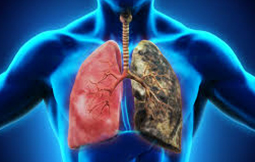
Lung cancer takes place in the cells of the lung when a cancerous (malignant) tumor grows and destroys nearby tissue. Lung cancer treatment is followed by a surgical procedure that removes all or part of a lung which further removes cancerous cells in the tissue.
Lung cancer takes place in the cells of the lung when a cancerous (malignant) tumor grows and destroys nearby tissue. Lung cancer treatment is followed by a surgical procedure that removes all or part of a lung which further removes cancerous cells in the tissue. The cells in the lung sometimes change and no longer grow or behave normally. These changes result in non-cancerous (benign) tumors such as hamartoma and papilloma. But in some cases, changes into lung cells can cause cancer.
Lung cancers are classified into non–small cell lung cancer and small cell lung cancer based on the type of cell in which cancer started. Your surgeon works to remove the lung cancer and a margin of healthy tissue by the following procedures
Following are some of the most common symptoms that an individual experience:
Before the surgery, the surgeon will recommend the following measures that need to be taken before the surgery starts:
Lung Cancer Surgery is usually performed by a team of an experienced surgical oncologist, under general anesthesia. It usually takes about 4 to 5 hours to perform the procedure. A surgeon may function to eliminate cancerous lung tissue and tissue in the nearby areas where cancer may have an extent. This sometimes includes eliminating a lobe or large segment of the lung in a process called a lobectomy. In severe cases, the surgeon needs to remove the lung entirely
Post-lung cancer treatment, the patient is monitored in intensive care (ICU) for a couple of days. After the patient, if shifted out of ICU, the nurses and physiotherapists will get the patient moving about as soon as possible, perform breathing exercises and leg exercises to avoid complications, for example, blood clots in the legs or chest infections. Regular chest X-rays are performed to make sure the patient can breathe well. Usually, the patient is ready to go home in about 10 days after the lung removal and 5 to 7 days after the lobectomy.
Lung cancer surgery also involves some risks and complications. Possible risks include
Copyright © 2021 IMA | All Rights Reserved.